I have seen several 4 pole induction motors that have coils wound like this:
Both the main winding and the auxiliary winding have 2 pairs of these coils.
This is concentric winding and I've only found some information about this on the internet, but nothing about why is this made and how this works.
I see the current also has an radial orientation (going inwards or outwards) besides the axial orientation (rotating cw or ccw).
Should this cause any difference?
For instance, imagine I take two overlapping coils (like one from main and one from auxiliary) to make the same pole. Then I have two options, like in this figure below:
In option 1 the current has the same radial and axial orientation in both coils, while in option 2 the radial orientation is he opposite.
Should they produce different fields?
And, disregard of being different or not: How should be the field produced by them?
Will it have a single maximum in the middle of the overlap? Or will it split in two maximums?
Cause I have tested some configurations using those to try to make a 2 pole motor (out of a 4 pole motor) and I have the impression that somehow I always have weaker extra poles, because it works, but it's strange.
I may explain it better here if you want, but I tested several possible configurations and even the best one I got to make a 2 pole motor still have the strange behavior of not accelerating to 3600 rpm by itself, even using only the main winding and giving an initial impulse.
It will always accelerate to 400 rpm or so and then keep that speed. And it doesn't stop there by simple lack of torque, if I try to accelerate it further it brakes down to that speed again quite fast.
Only if I give it quite a speed (like 2000 rpm) before energizing it will then accelerate to 3600 rpm and keep at 3600 rpm.
All of that sounds like it's producing a field with more poles than what I was expecting.

